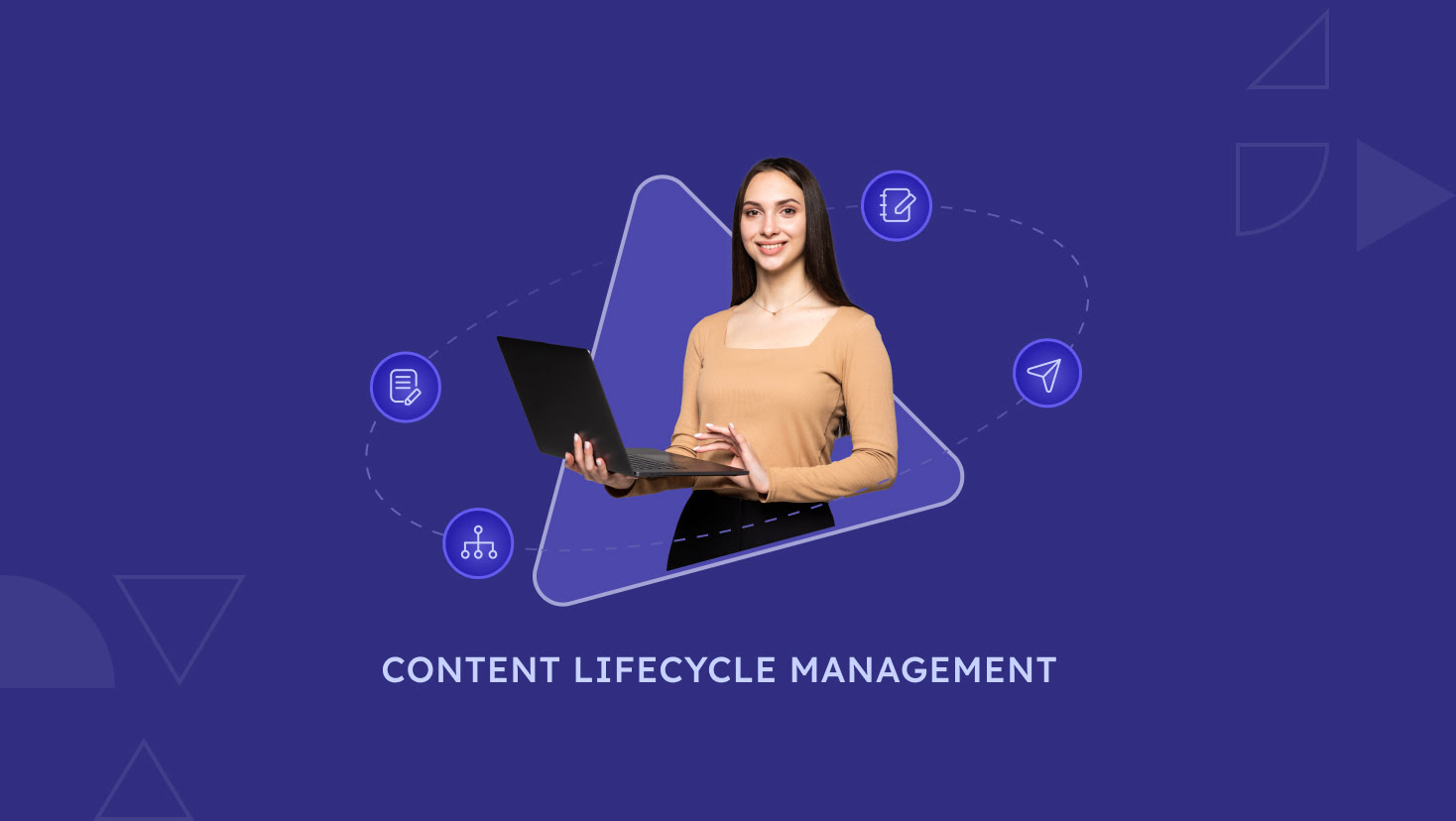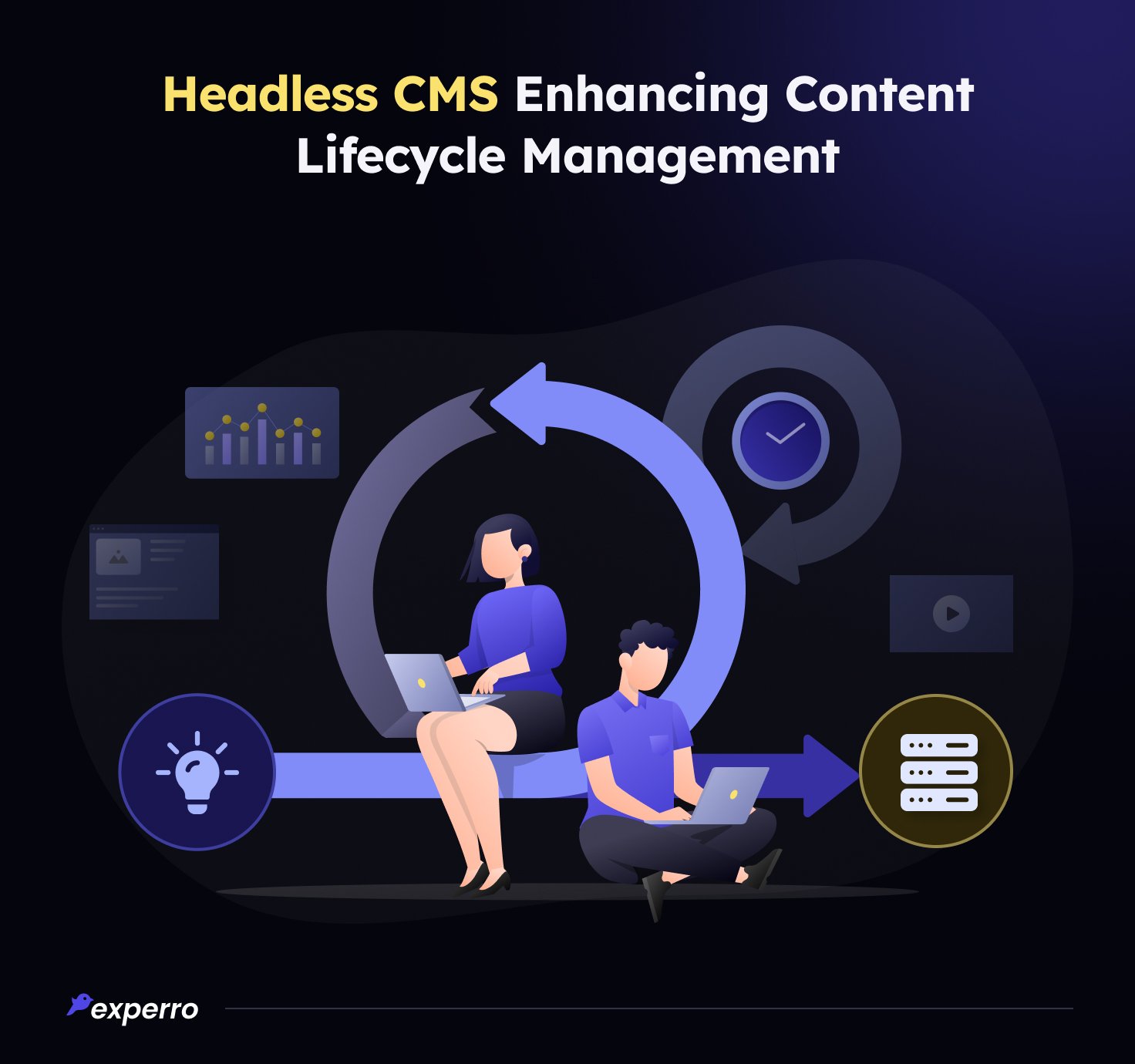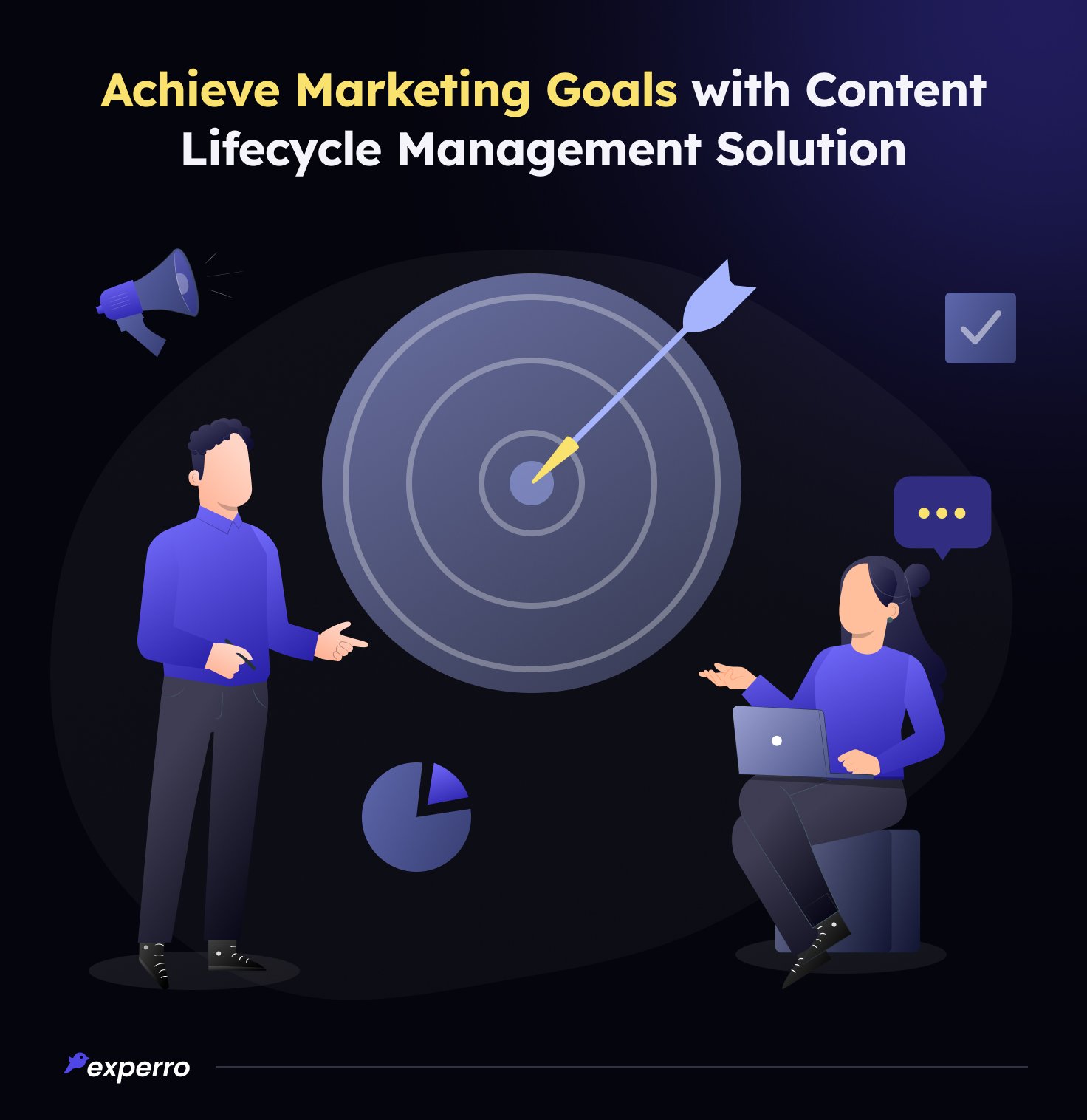What is Content Lifecycle Management: Stages & Challenges

What’s Inside
- What is Content Lifecycle Management?
- Why Do Organizations Need to Focus on Content Lifecycle Management?
- The 7 Stages of Content Lifecycle Management
- Common Challenges in Enterprise Content Lifecycle Management
- How Headless Content Management System Helps with Content Lifecycle Management?
- What Else? - Content Lifecycle Management Solution Helps You Achieve Your Marketing Goals!
- Concluding Thoughts
Key Takeaways
- According to the Content Marketing Institute, 73% of B2B and 70% of B2C marketers focus on content strategy.
- Effective content lifecycle management allows businesses to optimize content marketing strategies and reach to the target audience.
- Adopting a unified headless CMS can benefit organizations in optimizing the content lifecycle management process.
- Enhancing the content lifecycle management process benefits organizations by improving content efficiency and quality.
When it comes to enhancing digital presence with content, it is more than just words on a screen. Rather, it's about creating meaningful connections, evoking emotions, and building trust with your audience.
However, what can marketers/content strategists employ to elevate content to the level of excellence?
Implementing content lifecycle management is the key!
Enhancing content management process requires consistency. Moreover, it includes optimizing web content at every customer stage. From brainstorming that initial spark of an idea to crafting engaging pieces and delivering them on different digital channels.
Creating content is easy, however optimizing it and reaching the desired audience is not a piece of cake! To manage digital assets, businesses need the right approach and system to enhance their content lifecycle management.
In this blog, we'll delve into what content lifecycle management is, why businesses need it, and its challenges and solutions. Stay tuned to take your content game to the next level.
What is Content Lifecycle Management?
Content management lifecycle refers to the structured process of managing content from its creation to its retirement/archival face. Ultimately, when the content is no longer needed or relevant, it's either archived or removed entirely. This entire progression ensures content remains purposeful and managed efficiently from start to finish.
More than simply focusing on writing and publishing it is about it is about strategically optimizing and ensuring the relevance of content throughout its life.
Imagine nurturing a plant from seed to bloom. Similarly, content lifecycle goes through different stages, each stage with a specific purpose.
Moreover, content lifecycle management aims to ensure each piece of content is aligned with your business goal and strategy and gives you the maximum results.
So, the process takes care of everything from writing and managing content to its optimum utilization and reaching the right audience. Moreover, it enhances content, sales, and marketing strategies.
Why Do Organizations Need to Focus on Content Lifecycle Management?
Did you know? 36.7% of marketers report consistently creating engaging content is one of their top struggles.
Content marketing lifecycle needs help with keeping a flow between team members and departments. Creating high-quality content can take time and effort. Organizations can use content lifecycle management to keep everyone on the same page.
From the planning stage to content production, lifecycle management gives everyone an idea about how content is created and properly managed.
The 7 Stages of Content Lifecycle Management

Digital asset management is more challenging than it seems. Refining and repurposing existing content for maximum impact, the content creation process is exciting yet daunting.
However, the lifecycle of content creation simplifies the process.
The content asset lifecycle management refers to seven stages that are as follows:
1. Content Planning
Content planning is like sketching the blueprint of a house before construction. It's the stage where you're setting the groundwork. In the planning stage, you decide on topics, themes, and goals for your content.
This helps you create content that aligns with your audience's interests and marketing strategy. With robust content planning, each step will align with your goals.
For instance, it includes clearly outlining content topics, strategies, and objectives, deciding the type of content and its format, and creating a content calendar.
2. Content Writing
After content planning, there comes the step of content writing. In this stage, organizations generate content – articles, blogs, and all short and long forms – using creativity and expertise.
The aim is to produce engaging, informative, and valuable content for your target audience. Content writing is pivotal in creating brand awareness and establishing a valuable connection with the target audience.
3. Content Review and Approval
The content review and approval process ensure that the created content meets your brand's unique voice and standards and provides the right message to your audience. Here, created content is assessed and validated before it's published or distributed.
The content review and approval process must align with the writing process. For instance, as soon as a piece of content is written, it should promptly move to the review stage, ensuring a smooth workflow. It ensures synchronized approach between content creation and the steps of review and approval.
4. Content Publishing
Now comes the content publishing stage. It involves presenting content in front of the audience. Think of this content stage as opening your house's doors to visitors.
You release your content to the public, making it accessible on platforms like your website or social media. It's the moment when your audience can start interacting with your content.
5. Content Distribution
According to recent SemRush report 45% of organizations are focusing on publishing more content frequently.
The content distribution step is essential in the content management lifecycle process. It involves promoting your content to a broader audience through various channels and platforms to increase its reach and impact. The marketing team distributes the content on different digital media.
For effective content distribution, organizations need a headless content management system that aligns with their requirement. It should leverage appropriate channels and employ data-driven insights to optimize reach and engagement.
6. Content Monitoring and Analysis
We are sure your organization creates lots of content according to a schedule. But what about the outcomes? Companies need to check how well their content is doing by monitoring and analyzing the results.
Content monitoring and analysis refer to observing and examining various forms of content, such as text, images, videos, and audio. The aim is to gain insights, assess quality, and ensure compliance with specific criteria or guidelines.
This process is often used in various contexts, including media, marketing, and social media management. The features of headless CMS, such as analytics and insights, provide valuable insights about how your content is being received and how effective it is in engaging your audience.
7. Content Repurposing
The content repurposing is converting existing content to a different format, style, or method. Instead of creating new content from scratch, you can reuse existing content to reach new audiences or provide new perspectives on the same topic.
The content modeling and structuring in headless CMS helps to repurpose the same content with a touch of personalization.
Common Challenges in Enterprise Content Lifecycle Management
Navigating the content lifecycle management landscape presents challenges that require adept strategies for smooth and effective execution.
One notable challenge involves orchestrating multiple teams, tools, and platforms throughout the various stages of content development.
Furthermore, ensuring consistency across different versions of content, particularly during collaborative efforts for future campaigns, emerges as another pivotal challenge.
As multiple contributors refine and optimize content, discrepancies can arise, leading to fragmented messaging and diminished brand cohesiveness.
Maintaining a consistent brand voice, tone, and style throughout the content's lifecycle is crucial for building a recognizable and trustworthy brand identity. Striking a balance between accommodating individual creative contributions and upholding a unified brand identity necessitates meticulous attention and strategic collaboration.
The content lifecycle management should align with the business goals and social media platform strategies. With the right tools and technologies, businesses can enhance their content lifecycle management process.
How Headless Content Management System Helps with Content Lifecycle Management?

Surprisingly, the Headless CMS market is predicted to touch USD 3.8 billion in 2032.
Headless CMS can significantly enhance the content management process with a set of unique and valuable features. After going through what is headless CMS, explore the following points to uncover how it can help with each stage of the digital content lifecycle.
1. Centralized Content Repository
A headless content management system has a centralized content repository for storing and managing digital assets. Irrespective of different digital channels, it keeps content in one place.
This helps with the ongoing tasks and the entire lifecycle. From content teams to marketers, a unified headless CMS solution can help synchronize the whole process and impact the organization positively.
2. Real-Time Changes
Real-time content editing and preview allows organizations to see the live changes preview. With a headless CMS, multiple users can collaborate on the same content simultaneously, and all collaborators can see changes in real time.
Real-time preview functionality in a headless CMS allows content creators to see how changes will appear on different platforms without leaving the editing interface.
3. Content Collaboration
Content collaboration is the process of multiple team members working towards the same goal to enhance marketing efforts.
This content collaboration process involves team members such as content writers, content strategists, content marketers, designers, etc. The content collaboration aims to ensure everyone is on the same page and the content strategies are effectively utilized.
A suitable headless CMS allows different teams to work concurrently on their respective tasks by separating the content creation and management aspects from the frontend presentation.
4. Omnichannel Distribution
Did you know? Brands with an omnichannel strategy encounter a 9.5% increase in annual revenue.
Omnichannel distribution ensures a unified customer experience across various channels like websites, apps, and social media. Content lifecycle management involves creating, managing, and retiring content. Combining both ensures consistent content quality across platforms.
Omnichannel content distribution using headless CMS enables distributing content across different channels while maintaining a cohesive brand identity.
5. Analytics and Insights
Analytics and insights involve analyzing user data to understand how your content is performing. This helps you create better content, distribute it effectively, and measure its impact. It's crucial for making informed decisions throughout the content lifecycle.
Headless CMS supports analytics by providing a centralized platform for content management. It allows for real-time updates, A/B testing, and seamless integration with analytics tools, making it easier to gather and act on insights for content improvement.
6. API-based Content Delivery
API-based content delivery helps organizations distribute digital content on multiple digital channels. API-based content delivery uses APIs to acquire, display, or distribute content across multiple platforms and devices.
The same content can be served seamlessly across websites, mobile apps, IoT devices, wearables, and other platforms. This ensures consistent content delivery across the digital ecosystem, reducing the need for multiple content versions.
What Else? - Content Lifecycle Management Solution Helps You Achieve Your Marketing Goals!

Content Lifecycle Management is a strategy designed to make content assets help you meet your marketing objectives. It is not limited to merely delivering content.
It involves systematically managing your content through various stages to ensure its ongoing relevance, effectiveness, and value. This approach enhances engagement, reach, and overall success in your marketing efforts.
Now that you are all set to enhance your content lifecycle management strategy, there will be a lot of digital data to handle—such as images, videos, graphics, and design templates. The question arises: How do you effectively store these assets?
Here, creative asset management of headless CMS comes into play. These assets are stored in a centralized content repository, managing digital assets of different channels and campaigns. It ensures that all the content elements are readily accessible and optimized for effective utilization.
Concluding Thoughts
In a nutshell, maintaining content lifecycle management helps to enhance productivity and digital presence.
However, organizations must adopt a robust headless CMS to effectively create and publish digital content. Book a demo with Experro to effectively manage digital content and reach to the desired audience!
FAQs


Priya Zala
06 October 2023Through her writing, she has a lovely way of capturing users' pain points and delivering solution-oriented content. Her writing is sure to captivate readers and leave them with a lasting impression. When not crafting content, Priya enjoys getting lost in a good work of fiction, which soothes her soul.